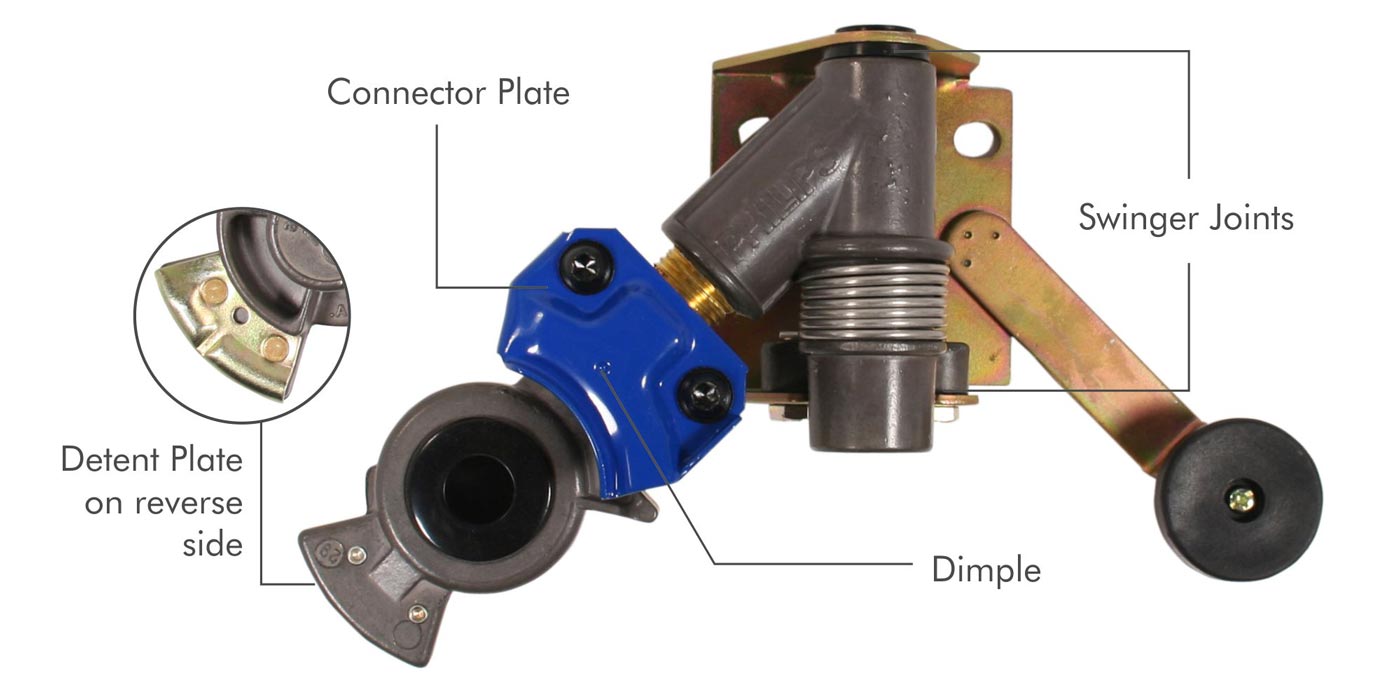When connecting the glad hands, ensure a tight but not overly tight connection. Glad hands are essential coupling devices for air brake systems, connecting service and emergency air lines from the truck to the trailer.
Properly securing them is crucial for safe and efficient operation of commercial vehicles. This simple yet vital step plays a significant role in ensuring the effectiveness of the air brake system, allowing for seamless communication between the truck and the trailer during transportation.
Failing to connect glad hands properly can result in air leaks, brake malfunctions, and jeopardize the safety of the driver, passengers, and other road users. Understanding the importance of correctly connecting glad hands is fundamental for any commercial vehicle operator to maintain optimal safety and performance on the road.

Credit: www.shutterstock.com
Navigate As You Want: [show]
What Are Glad Hands And Why Are They Important?
Glad Hands are a type of coupling device used in the trucking and transportation industry. They are primarily used to connect the air brake systems between a tractor and trailer. This connection ensures that the air brake systems of both the truck and trailer work in unison, allowing for safe and efficient braking operations.
The importance of Glad Hands in trucking cannot be overstated. They play a crucial role in maintaining the safety and functionality of the braking systems in commercial vehicles. Proper maintenance and regular inspection of Glad Hands are essential to prevent air leaks, which can lead to brake failure and potentially dangerous situations on the road.
How To Connect Glad Hands
| Connecting Glad Hands: |
| 1. Position glad hands perpendicular. |
| 2. Press glad hands together firmly. |
| 3. Rotate glad hand handles until locked. |
Maintenance and Cleaning Tips:
1. Inspect glad hands for any damages regularly.
2. Clean couplers before connecting to prevent air leaks.
3. Apply silicone grease to seals for smooth operation.
Common Issues When Connecting Glad Hands
|
When connecting the glad hands, it is important to check for any common issues that may arise. One common issue is the crossing of the glad hands, which can result in air leakage. This can happen if the couplers are not aligned properly, causing air to escape. |

Credit: www.fleetequipmentmag.com
Tips For Ensuring A Secure Glad Hand Connection
Connecting the glad hands properly is crucial for the safe operation of a commercial vehicle. When ensuring a secure glad hand connection, it is important to check for proper alignment to prevent air leaks. Using adequate pressure when connecting the glad hands is essential for a secure seal and optimal brake function. Additionally, inspecting for damaged or worn parts can help identify any issues that may compromise the connection. Regular maintenance and thorough inspection of the glad hand connections are imperative for the overall safety and performance of the vehicle.
Replacing Or Upgrading Glad Hands
When it comes to replacing glad hands, it is important to know when it is necessary. Regular inspection of glad hands is essential to ensure they are in good working condition. Signs of wear and tear, such as cracks or leaks, indicate that replacement is needed. Additionally, if there are any signs of air leakage or improper connection, it is crucial to replace them immediately to prevent further damage.
Glad hands should be replaced if there are visible signs of damage, such as cracks, leaks, or worn-out seals. It is crucial to inspect the glad hands regularly to ensure they are functioning properly and not compromising the air brake system. Any signs of air leakage or improper connection should be addressed promptly to prevent accidents on the road.
Glad hands come in various types, such as the Roadpro Gladhand Universal, Kootans Service and Emergency Gladhand, War-lok trailer glad-hand lock, Road King Economy Dummy SH… Each type has its own features and benefits, so it is essential to choose the right type based on your specific needs and requirements. Consulting with a professional can help you identify the most suitable glad hands for your truck or trailer.
The installation and replacement of glad hands require proper attention and care. It is important to follow the manufacturer’s instructions and guidelines for a secure and correct installation. This will ensure that the glad hands are functioning effectively and safely. If you are unsure about the installation process, consulting with a professional or referring to online resources can provide step-by-step instructions to guide you through the process.

Credit: www.youtube.com
Frequently Asked Questions Of When Connecting The Glad Hands
How Do You Connect A Gladhand?
To connect a gladhand, simply press the two seals together until they snap-lock. Make sure the couplers are clean and free of dirt. The connection should be tight but not overly tight. A gladhand connector is used to connect the service and emergency air lines from the truck or tractor to the trailer.
What Do You Connect Your Glad Hands To When Uncoupling?
When uncoupling, connect your glad hands to the dummy couplers or dummy glad hands on the trailer.
What Happens If You Cross Glad Hands?
Crossing glad hands will misroute air supply, preventing trailer brakes from releasing. Ensure correct connection to avoid issues.
How Do You Use Glad Hand Air Hose?
To use a glad hand air hose, simply press the seals of the couplers together to connect the service and emergency air lines securely.
Conclusion
Correctly connecting the glad hands is crucial for safe and efficient operation of commercial vehicles. Ensuring a tight, clean connection with no dirt or damage is essential. Understanding the function of glad hand couplers can prevent air leaks and maintain proper brake function.
Following proper procedures for coupling and uncoupling is imperative for smooth operations and safety on the road.




